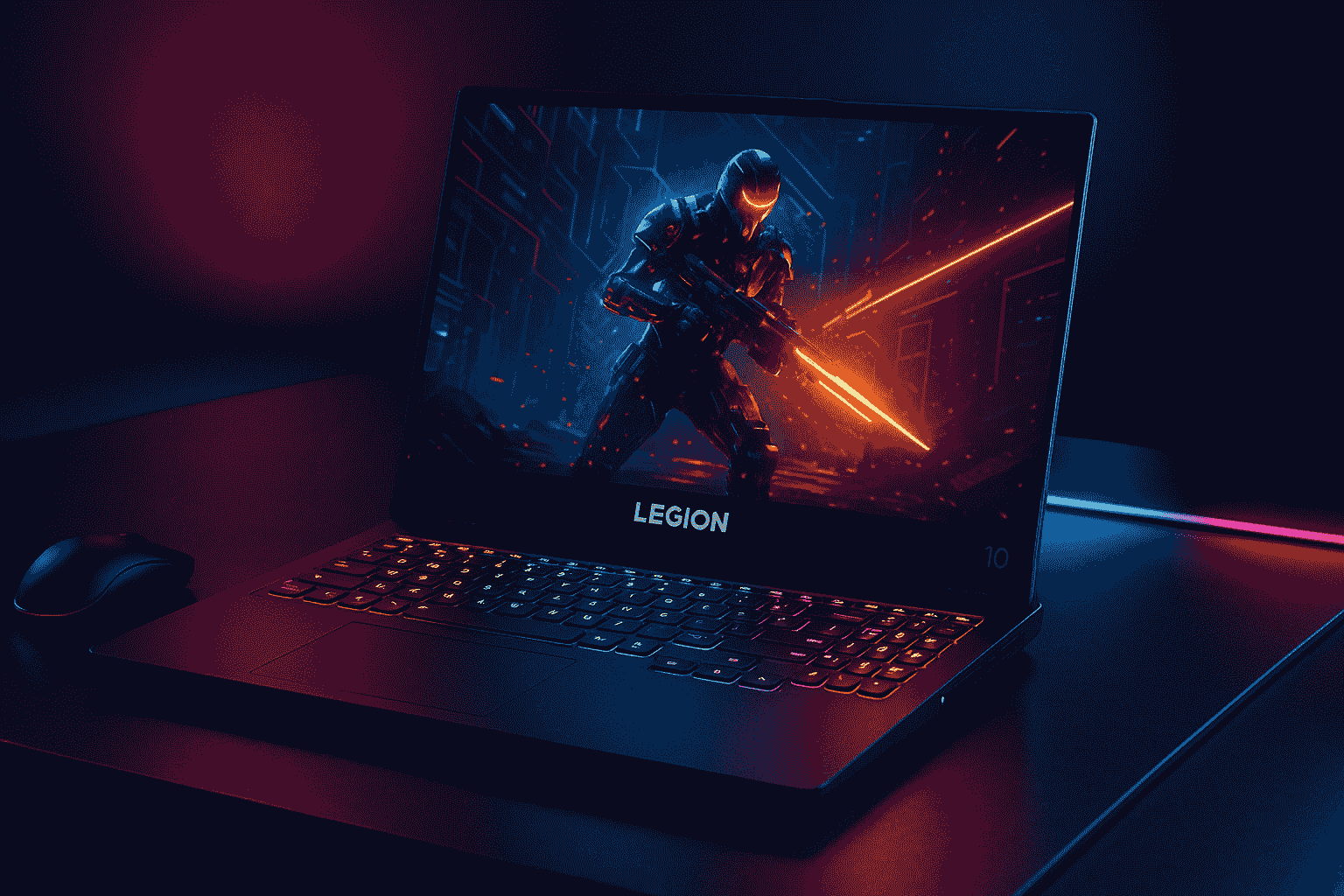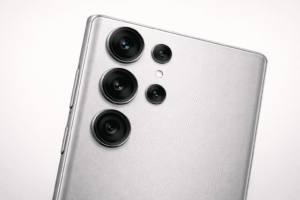When Lenovo puts a new number on its Legion lineup, the PC gaming world pays attention—and the Legion Gen 10 / “Legion 10” era is no exception. Across the Pro and mainstream Legion families we’re seeing higher-power CPUs, top-tier NVIDIA GPUs, premium OLED panels (and in one case, a jaw-dropping 2D/3D display), and a deliberate push toward expandability and thermal headroom. Even in Lenovo’s broader portfolio, devices like the Lenovo IdeaPad Slim 3 show how the company balances everyday usability with performance, making the Legion series stand out even more for gamers seeking cutting-edge hardware.
But does that translate into a true “game-changer,” or is Lenovo just iterating on an already crowded premium-gaming field? Let’s unpack what matters: performance, screens, cooling, build and features, and real-world tradeoffs.
Lenovo Legion 10 Series
Lenovo’s Gen-10 Legion family stretches from the value LOQ and Legion 5 models up through the Legion Pro line and the new flagship Legion 9/9i and 18-inch models. The Pro machines bring the highest-end silicon (Intel Core Ultra/“HX” class and top mobile NVIDIA GPUs), larger power envelopes, and Lenovo’s more advanced cooling stacks.
Across the range Lenovo is leaning heavily into high-refresh OLED options and marketing expandability (user-accessible RAM / SSD bays on some models).
If you want a console-level frame rate with desktop-grade thermals, Lenovo is building the chassis to accept that level of power.
Also read: MacBook Air M4 vs MacBook Pro M4 — which one should you buy?
Lenovo Legion 10 Series Performance and thermals
Testing shows that Lenovo prioritizes raw performance and sustained power over tiny, ultra-thin designs.
The Pro 7i/Pro 5 class models in particular run at higher power limits than many thin-and-light competitors, which translates into consistently higher CPU/GPU sustained scores in long gaming or rendering workloads.
That’s excellent for users who prioritize absolute FPS and content creation power.
That said, high sustained power brings the usual compromises: sizzling thermal images under full load and chassis heat that requires a beefy cooling solution.
Lenovo’s approach—slightly thicker chassis and big cooling—means better long-term performance than some ultra-thin rivals, but also a heavier, less portable laptop overall.
If you want the fastest frames possible in a portable form, Legion’s Gen-10 models are attractive; if you want a featherweight daily driver you may prefer a different tradeoff.
Also read: Redmi Launches 2K 120Hz IPS Display Monitor for Only $125
Lenovo Legion 10 Series Display Specification

One of the most headline-grabbing elements of the new Legion lineup is display experimentation.
Lenovo offers high-refresh OLED panels (WQXGA/16:10 options at high Hz), and on the flagship Legion 9/9i Lenovo introduced a novel switching 2D/3D lenticular display capable of glasses-free 3D at certain resolutions and frame rates—something aimed at creators and niche gamers who want an extra visual dimension.
For the majority of players, though, the big win is simply the combination of OLED contrast + high refresh, which makes games look spectacular while delivering competitive responsiveness.
Lenovo Legion 10 Series Build quality And ports
Lenovo has doubled down on giving buyers practical value beyond raw silicon.
The Legion 9 and the 18-inch Legion 9 18 models show a focus on premium materials (even carbon-fiber lids on some trims) and more user-accessible expansion—extra RAM and SSD slots that are becoming rarer on premium laptops. Similarly, the Lenovo Bellator 7000 emphasizes durability and upgrade flexibility, positioning itself alongside these high-end offerings.
That matters if you want to buy a base config and upgrade later instead of paying a premium upfront. Port selection is typically generous (full-size Ethernet, multiple USB-C/Thunderbolt, HDMI), which keeps Legion models versatile for docking and streaming setups.
Lenovo Legion 10 Series Software
Lenovo bundles its Legion software for performance profiles, fan control, and hardware monitoring.
On some Gen-10 systems Lenovo includes AI or “smart” performance features to shift power/clock behavior depending on workload—useful for balancing noise, thermals and FPS in different scenarios.
The overall software stack is mature, but it’s largely comparable to what competing makers like MSI, ASUS ROG, and Alienware offer.
The differentiators remain hardware and thermal design rather than a unique software ecosystem.
Lenovo Legion 10 Series Battery life
You can’t have both H-series performance and long battery life in a thin chassis.
Expect gaming-class battery life (a few hours of light use, much less under gaming loads). Lenovo’s strategy here is clear: give buyers desktop-replacement performance when plugged in, and accept that mobility will be limited compared with ultra books.
This trade-off is common across the segment, with rivals like the HP Omen 16 also prioritizing raw power over long unplugged endurance.
If portability and long unplugged use are priorities, the Legion Pro machines aren’t the best fit—look at lighter alternatives or lower-power SKUs.
The tradeoff is intentional, and Lenovo seems content to optimize for performance.
Who should buy a Legion Gen-10?
Buy a Legion Gen-10 if:
You want raw, sustained gaming and content-creation performance (not just short bursts).
You value premium displays (high-refresh OLED or niche 2D/3D) and a solid I/O set for streaming/docking.
You like upgradeability—user-accessible RAM/SSD slots are a real plus on certain Legion models.
Skip it if:
You need long battery life or ultra-light portability.
You want the absolute best value per dollar at midrange price points—some competitors may win on pure bang-for-buck in specific configurations.
Our Take on Lenovo’s Legion 10 Lineup
The Legion Gen-10 series isn’t a revolution that redefines what a gaming laptop can be, but it is a strong, well-executed evolution.
Lenovo’s focus on heavier cooling, top-end components, premium OLED displays (and experimental 2D/3D tech), plus practical expansion options, makes this generation one of the most compelling for gamers who treat their laptop like a portable desktop.
For many buyers that combination will feel like a game-changer—because it delivers higher sustained performance, better thermals, and modern display tech in the real world.
But in the broader market context, competitors have made similar strides: Razer, Alienware, ASUS ROG, and MSI all offer machines targeting the same audiences. So Lenovo’s Gen-10 wins in execution and choice, but it’s part of a highly competitive arms race rather than a standalone seismic shift.
If you want a high-power gaming machine that you can upgrade and rely on for long gaming sessions, Lenovo’s Legion Gen-10 family is absolutely worth serious consideration. If you’re chasing thinness, battery life, or the absolute lowest price per frame, look elsewhere.







